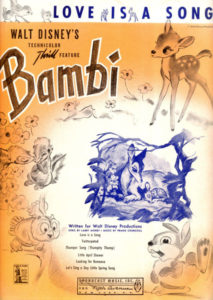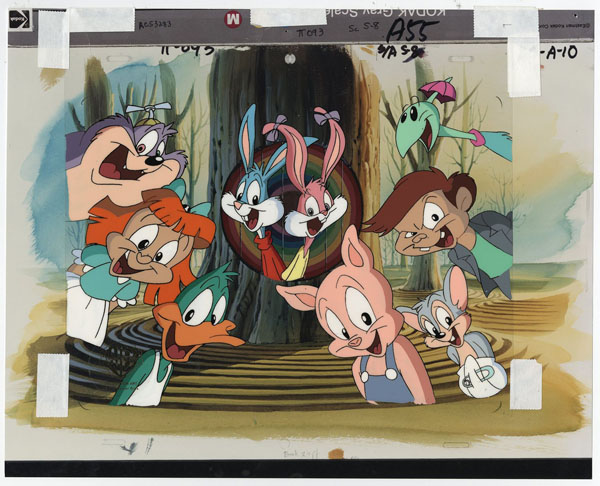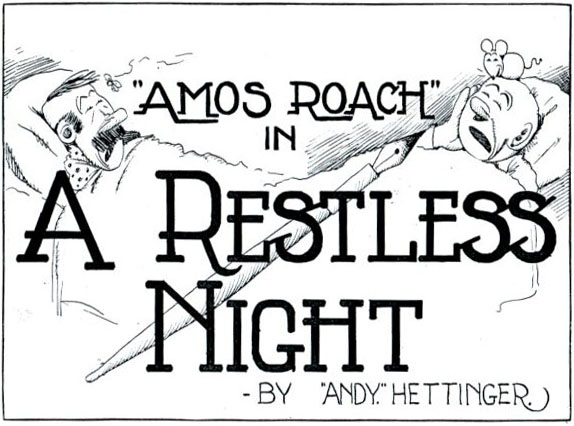
 Importance of Bambi Music. From a story conference on the music for Bambi (1942) on October 24, 1940, Walt Disney said, “We have to have a powerful music score on this. I tell you it will add to the picture’s greatness if you do have a marvelous musical score, one that expressed the action and gives force to it. How many words of dialogue have we got in this picture?” Story director Perce Pearce said, “900. There ought to be 875.”
Importance of Bambi Music. From a story conference on the music for Bambi (1942) on October 24, 1940, Walt Disney said, “We have to have a powerful music score on this. I tell you it will add to the picture’s greatness if you do have a marvelous musical score, one that expressed the action and gives force to it. How many words of dialogue have we got in this picture?” Story director Perce Pearce said, “900. There ought to be 875.”
Walt replied, “You see how important the music is? There’s a terrific power to music. You can run any of these pictures and they’d be dragging and boring but the minute you put music behind them, they have life and vitality they don’t get in any other way. We have to do that with this picture. Put an emphasis on the music.
“The music has to supply something that would ordinarily be supplied with dialogue and a more gripping story maybe. The music has to supply that, and it can.”
The Great Cel Robbery. The Los Angeles Times for December 27, 1991 told the story of Warner Brothers recovering more than 3,000 cels, backgrounds and drawings from its Tiny Toons series valued at $500,000 that were stolen. Jerry Zweighaft, Travis Cowsill (also known as Travis Locke and who had done freelance work for Warners) and Nicolette Harley were selling the artwork at swap meets in Orange County, San Diego and Las Vegas.
Cowsill admitted to taking the artwork but said he thought he was saving them from being thrown away. “It literally broke my heart because I didn’t want to see them destroyed. I wasn’t trying to steal anything,” said Cowsill. According to Warners only three cels were unable to be recovered and sold to collectors who could not be traced. Warners said it had released only 250 cels legitimately from the show for sale through the Warners Brothers Store.

Capitol Critters: The Mouse That Bored. In 1992, a new prime time animated series from producer Steven Bochco was released called Capitol Critters about rodents who live in the basement of the White House.
“Of course, The Simpsons paved the way but I don’t want this show to be called a ‘rival’ because that implies that somebody has to be a winner. I’d like to have lots of animated shows on television because I think they’re wonderful entertainment,” said Bochco in an interview in the L.A. Daily News for January 26, 1992.
“Comparing the two shows is really unfair. They’re really two completely different pieces of work. The Simpsons is an animated comedy, if you will. You could throw out the animation, cast those characters with real actors and not change anything fundamental to the concepts of the show whereas Critters is a cartoon show.
“It’s got little animals who speak English, amazingly, and they do all those things that cartoon characters do. It’s such a profound difference that it really makes the two shows a comparative case of apples and pears.”
 The Redeemed Beast. From the L.A. Daily News November 30, 1991: Kirk Wise, co-director on Disney’s Beauty and the Beast (1991) said, “(Composer) Howard Ashman felt very passionately that the American musical theater was sort of the spiritual ancestor of the animated feature and that the animated feature had become the last refuge of musical theater. It’s the only place where you can still get away with a character bursting into song.
The Redeemed Beast. From the L.A. Daily News November 30, 1991: Kirk Wise, co-director on Disney’s Beauty and the Beast (1991) said, “(Composer) Howard Ashman felt very passionately that the American musical theater was sort of the spiritual ancestor of the animated feature and that the animated feature had become the last refuge of musical theater. It’s the only place where you can still get away with a character bursting into song.
“Howard helped us structure the story so that the songs support it and grow out of it, rather than feeling tacked on. He insisted that the story was really the Beast’s story and his redemption. Of course, Belle is not a passive heroine along for the ride; she is a more active participant who helps redeem the Beast.”
 Bluth Quality. In 2002, animator and producer Don Bluth said, “The papers gave us the nickname ‘renegades’, for leaving Disney, back in 1979. It was about quality. We were at Disney because of those masterpieces they created in the 1930s and 1940s and up into the 1950s. Many of the production values, we loved, had long been abandoned for efficiency and economy. We had been trying to put these values back into the films of the 1970s, like Pete’s Dragon and The Small One, but Disney wasn’t interested in the art, only the cost.”
Bluth Quality. In 2002, animator and producer Don Bluth said, “The papers gave us the nickname ‘renegades’, for leaving Disney, back in 1979. It was about quality. We were at Disney because of those masterpieces they created in the 1930s and 1940s and up into the 1950s. Many of the production values, we loved, had long been abandoned for efficiency and economy. We had been trying to put these values back into the films of the 1970s, like Pete’s Dragon and The Small One, but Disney wasn’t interested in the art, only the cost.”
Arcade Games Save Classic Animation. From the Los Angeles Times August 9, 1983, animator and producer Don Bluth felt that arcade games could provide a market for high-quality animation, help create a larger audience for animated features and be a great training ground for future animators.
“The market is fantastic for this industry,” said Bluth. “Games could replace the old theatrical shorts as a training ground for animators and a place where we can experiment. They can also bring in money that can be used to finance projects on a grander scale, like animated features.
“It’s not just the teenagers who are playing (Dragon’s Lair). It’s the 18 to 35 year olds. That says to me they’re interested in looking at animation if they can interact with it. The audience didn’t come to see The Secret of NIMH (1982) but the next time we have a picture out, we might be able to get them in. If animation becomes something beyond Saturday morning programming for them, something that’s a part of their lives, they’ll seek it out.”

The Lost Animator. Andy Hettinger was a young artist who grew up in Chicago, the son of a photo retouch artist who later moved to McHenry county where Hettinger drew the Amos Roach comic strip for the McHenry Plain Dealer. He also assisted Sidney Smith circa 1914 and 1915 with the old Doc Yak animated films. While working for Smith, Hettinger created his own animated cartoons featuring his original character of Amos Roach.
The two known shorts are A Restless Night for which artwork exists but no film print and The Stolen Dream (1914) where only a partial print survives. In the days before cels, these were drawn on paper. Hettinger also did editorial cartoons and spot illustrations for the Plain Dealer newspaper. He tried in 1915 to self-syndicate the daily Amos Roach comic strip to local papers and did over one hundred examples. Hettinger died in February 1916 of gangrene from a boating accident.



 Jim Korkis is an internationally respected animation historian who in recent years has devoted his attention to the many worlds of Disney. He was a columnist for a variety of animation magazines. With his former writing partner, John Cawley, he authored several animation related books including The Encyclopedia of Cartoon Superstars, How to Create Animation, Cartoon Confidential and Get Animated’s Animation Art Buyer’s Guide. He taught animation classes at the Disney Institute in Florida as well as instructing classes on acting and animation history for Disney Feature Animation: Florida.
Jim Korkis is an internationally respected animation historian who in recent years has devoted his attention to the many worlds of Disney. He was a columnist for a variety of animation magazines. With his former writing partner, John Cawley, he authored several animation related books including The Encyclopedia of Cartoon Superstars, How to Create Animation, Cartoon Confidential and Get Animated’s Animation Art Buyer’s Guide. He taught animation classes at the Disney Institute in Florida as well as instructing classes on acting and animation history for Disney Feature Animation: Florida.




















































Never heard about that Tiny Toons cel story. Jerry Zweighaft and Nicolette Harley don’t appear on imdb but Travis Cowsill has done plenty of other work since then: https://www.imdb.com/name/nm0184878/ , so I’m glad his career wasn’t cut short by doing that.
Disney’s “Beauty and the Beast” is actually an operetta. The music sustains the story all the way from the opening credits to the closing credits, and much of the dialogue is sung. The re-releases and the Broadway adaptation have added even more songs to an already rich musical score.
The music for “Bambi” was lush and romantic, as well as powerful. It’s like a feature-length Fantasia segment set to an original score. Most people only remember the early cuter portions of the film, but the film’s themes grow darker and more adult as the story progresses. It is truly a film more for adults than for children. Alas, of all the Disney features, the songs and music from “Bambi” get the least coverage from popular singers and conductors. One notable exception is Tutti Camarata’s “Bambi” orchestral and choral re-arrangement.
Bluth’s “Secret of NIMH” may not have fared exceptionally well at the box office, but it is nonetheless a strong film which received many good critical notices. It was a huge improvement over its contemporary Disney counterparts, and overall a superior effort in comparison to its more commercially successful follow-up “An American Tale.” In fact, Bluth deserves high praise for his animated output, which consistently has striven to raise the bar above the money-making mediocrity that the Disney corporation has frequently embraced. (“Beauty and the Beast” is one of a handful of exceptions–a high quality operetta with adult appeal as well as child appeal–and a film which might not have been produced with such care had Bluth not paved the way and served to remind audiences and animators how excellent animation could potentially be.)
When I used to work on drawn productions, I would ask if they could give me a cel as a souvenir. Most the time they would tell me that the cels were property of the producers and that they couldn’t…or a couple times they’d give me a real shitty inbetween. Not that I was ever planning to flip them (never have), but it’s like they’re adverse to any artist making a potential bonus on things we usually got paid peanuts. Of course very producer over estimates their property’s importance and value.
Atkinson Film Arts used to slice up old cels into peg reinforcement strips. I did finally get a few when a cameraperson intercepted a box that was allegedly heading to be repurposed, but I had to beg this person who was going to hog the whole thing to their self.
In hindsight, I wish I wasn’t so law-abiding and just took without asking.
Rough animation was easier as that was thrown-out, not even recycled. By the time I worked at Disney TV Canada, all roughs were discarded securely to a shredding as one would business documents. One could technically be fired for taking so much as a paper clip from the studio. Of course, I have nothing from there, not even scenes on which I assisted. It was a rigmarole to get that.
Random memory: Burger King had a promo with “Capitol Critters” toys, designed for little kids (no small moving parts, etc.). The show was already off the air when the toys were available.
From what I was told, the arrest of the cel-thieves was a late night sting operation, with private detectives, policeman, county sheriff deputies, FBI agents and the head of Warner Bros security swarming the storage location when the culprits were present with their loot.
Unfortunately Capitol Critters, all 13 episodes, is not on here on DVD yet – but I want them to be on on DVD!